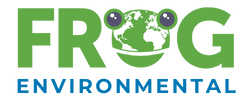Customer Service FAQs
SWPPP revisions are necessary to address any physical or operational changes at the facility, significant changes to the existing BMPs, changes to discharge and sampling locations, and changes in the Pollution Prevention Team. SWPPP updates are needed whenever a Level 1 or Level 2 Exceedance Response Action (ERA) is required. An updated SWPPP must be submitted and certified on SMARTS. If no updates are made to the SWPPP, the Discharger is not required to resubmit the SWPPP on SMARTS.
Yes, we offer Premium Sampling services in most areas depending on our availability.
A monthly visual Best Management Practices (BMP) and Non-Storm Water Discharge (NSWD) Observation must be performed and documented once per month during operating hours on a day without precipitation. A minimum of 12 observations, one for each month, must be completed and retained on-site. When Frog visits your site, we will complete the Monthly Observation for that month. Additionally, a Sample Event Visual Observation must be completed whenever a storm water sample is collected.
Storm Water Pollution Prevention Plan (SWPPP), Hazardous Materials Handling, Spill Prevention Control & Countermeasure (SPCC), and Refresher Stormwater Monitoring Trainings – Observation Completion, Sample Locations, Sampling Technique and Requirements.
If Frog hasn’t contact you about your exceedance(s), please call our office to discuss BMP strategies to prevent future Numeric Action Level (NAL) exceedances.
Yes, facilities can qualify for a sample frequency reduction. Facilities that do not have NAL/TNAL/NEL exceedances for four (4) consecutive QSEs, and are in full compliance with the General Permit requirements, are allowed to decrease sampling frequency from four samples per reporting year to two. If applicable, joining a compliance group is another way to reduce sample frequency from four to two samples per reporting year. Contact Frog for our compliance group options.
Please call our office to schedule a sample pickup ASAP, or email: stormwatersamples@frogenv.com. Also, make sure to fill out your Sample Event Visual Observation and keep it onsite in your Monitoring binder.
Annual Reports are required to be submitted and certified on SMARTS by July 15th of every reporting year.
Yes, currently we service clients in WA, OR, AZ, and NV.
Yes, Frog provides many Haz Mat compliance services including Hazardous Materials Business Plans (HMBP) and CERS reporting. Frog also prepares Spill Prevention Control & Countermeasure (SPCC) Plans and other EHS Services.
Please contact our Frog SMARTS Team at SMARTS@frogenv.com.
Please follow this link:
https://www.waterboards.ca.gov/water_issues/programs/stormwater/docs/dischargers_guide_adhocreport.pdf or contact Frog for guidance.
Yes. Please follow this link: https://www.frogbmpstore.com/. You can also call our warehouse at 562-391-2925.
Each of these circumstances requires filing a Notice of Termination(NOT) and will likely also require submitting an Annual Report. In addition to filing the NOT, facilities that are moving or changing ownership are required to file for a new permit representing the new address or ownership.
If the rain event produces a discharge for at least one drainage area, which is preceded by 48 hours with no discharge from any drainage area, then your facility is required to sample unless the required number of samples have already been collected. Samples from each discharge location shall be collected within four (4) hours of discharge or the start of facility operations if the QSE occurs within the previous 12-hour period. The discharge should be enough to fill up all of your required bottles. Please do not force a sample or sample standing water.
Please call 310-241-0866.
Please email accounting@frogenv.com or call 310-241-0866
